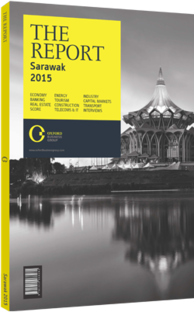OBG talks to Takeo Suzuki, President, Tokuyama Malaysia

Interview: Takeo Suzuki
What are the incentives attracting foreign investors in heavy industry, and how can Sarawak capitalise on strong trade ties between Japan and Malaysia?
TAKEO SUZUKI: Sarawak holds numerous advantages as an investment destination for foreign companies looking to set up branches or plants here, but there are four major incentives that influenced our decision to base our polycrystalline silicon plants in Samalaju Industrial Park. Foremost is the ready availability of hydropower at large volumes and at a reasonable price. This is especially true for the pioneer investors in the Sarawak Corridor of Renewable Energy, which have high power needs and are given competitive bulk rates.
Sarawak, and the industrial park in particular, also provides easy access to industrial water, which is needed for operations. In addition, Sarawak is equipped with a highly educated workforce, which is conducive to industries seeking skilled workers. Finally, there are tax incentives and high levels of government support for investors both from the federal and state governments, including preferential tax treatment for pioneer investors and strong support for the acquisition of permits and licences. These factors bode well for Sarawak moving forward in its goal of attracting further investment.
Japan has indeed been one of Malaysia’s largest trading partners, and we are proud to be among the first to extend these ties directly to Sarawak. Since the establishment of our operations here, several of our service providers and suppliers have established or are aiming to establish branches here, and are learning from these pioneers. In this sense there is scope for the further development and strengthening of ties between the two nations, and specifically with Sarawak.
Is the disparity in skilled labour supply between Sarawak and industrialised nations an issue?
SUZUKI: Sarawak has a small population, but there is a good level of skilled labour available in the state. As of February 2015, we have 582 Malaysian employees, 570 of who are from Sarawak, and the rest are from other parts of Malaysia. We do not need to import any workers from overseas. We started our recruitment activity in 2010 and could hire a greater number of skilled employees in a very short period.
To provide basic training to our employees, in 2011 we sent 56 of our Malaysian staff to Japan because we did not yet have a training centre in Samalaju. However, in 2012 we established an in-house education centre and now do all our training in Sarawak. We also plan to implement cross-border programmes to send our employees to Japan. This opportunity will give workers further experience, skill and knowledge on polycrystalline silicon production. We would like them to learn more about Japanese craftsmanship so that they can improve productivity and quality. A background in engineering fields (chemical, mechanical, electrical) is indispensable for the safe operation of a chemical plant. It is very important for industry, government and educational institutions to work together to respond to the increasing demand for skilled labour in Samalaju.
Is there scope for further infrastructural upgrades to Samalaju to ease doing business?
SUZUKI: Samalaju is still a relatively young industrial site and there are ongoing concerted efforts to expedite its development. First, the establishment of the township at Samalaju would greatly ease business here and attract further investment once the key infrastructure is all present. At the moment, all employees working at Samalaju Industrial Park must be mobilised from Bintulu town, which is difficult given the distance and road capacity. The key benefits of the establishment of the township would be more efficient time management, reduced transportation costs, and the fact that having a township in the area will make the industrial site more attractive for future prospective staff. Furthermore, the establishment of Samalaju Industrial Port will greatly reduce congestion on roads in the area, as all companies are currently using Bintulu Port and transporting cargo by land the rest of the way to Samalaju.
You have reached the limit of premium articles you can view for free.
Choose from the options below to purchase print or digital editions of our Reports. You can also purchase a website subscription giving you unlimited access to all of our Reports online for 12 months.
If you have already purchased this Report or have a website subscription, please login to continue.

